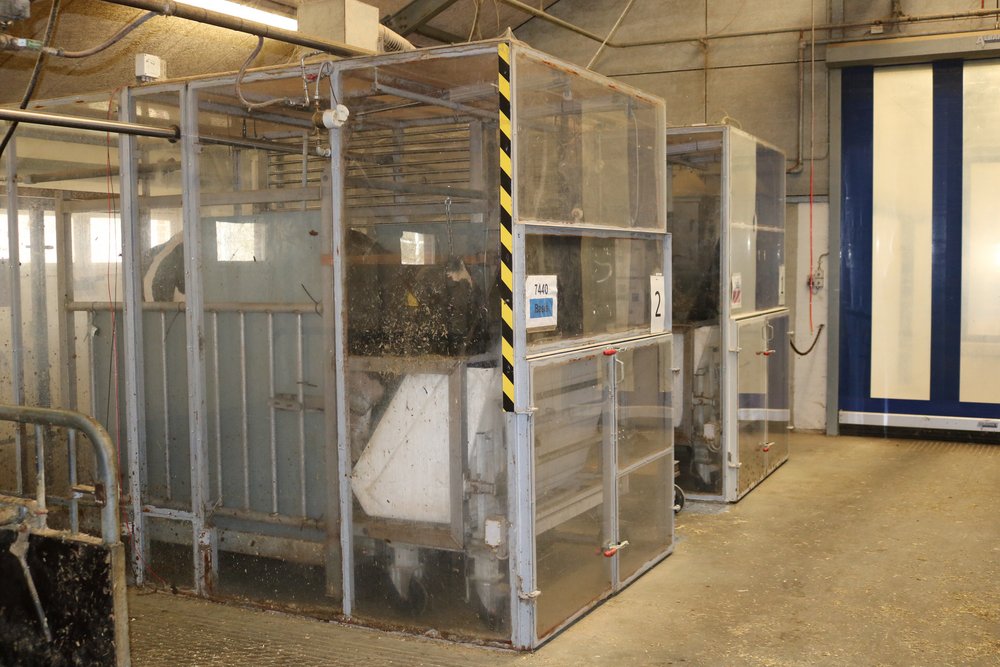The amount of roughage has a major influence on cows’ methane production
A feeding trial at AU Foulum has shown that cows’ enteric methane emission decreases markedly when the amount of roughage in the feed ration is limited significantly. However, this feeding strategy is not applicable in practice, as it challenges the cows’ health as well as the farmer’s economy.
![[Translate to English:] Jerseyko i fodringsforsøg ved AU Foulum. Foto: Linda S. Sørensen. [Translate to English:] Jerseyko i fodringsforsøg ved AU Foulum. Foto: Linda S. Sørensen.](/fileadmin/news_import/jerseyko_toerkefodringsforsoeg2019.jpg)
Based on the drought during the summer of 2018, a previous project at AU Foulum studied the possibility of feeding dairy cows with less or no roughage at all. The results showed that the cows performed reasonably without roughage, but analyses of the rumen content also showed that the rumen metabolism, and thus the cows’ health, was challenged. The amount of roughage did not affect milk yield; however, the fat percentage in the milk decreased significantly when roughage was not used, hence lowering the energy corrected milk yield.
A study on the importance of roughage for the cows’ methane production
Based on these results, the researchers from AU carried on working with the same feed rations in order to study how such rations affect the cows’ methane productionNon-GM concentrate consisted of raw materials grown in North-Western Europe where it is abandoned to grow GM crops. These three feed rations were used:
- BASIS: 50% dry matter from roughage, meaning a “normal” ration
- 25% Roughage: 25% dry matter from roughage + 5% dry matter from straw, and the rest was concentrate
- Zero Roughage: 0% dry matter from roughage + 10% dry matter from straw, and the rest was concentrate.
Each ration was studied in four Holstein and four Jersey dairy cows.
During the project, the cows enteric methane production was measured in respiration chambers at AU Foulum. Furthermore, the cows were weighed, rumen and faecal samples were taken, and feed and water consumption as well as rumination was registered.
Cows placed in climate chambers at AU Foulum. Photo: Linda S. Sørensen.
Less roughage results in less methane
The results showed a very large reduction in the methane emission when reducing the amount of roughage from 50% to 0%. This was especially the case for Holstein, in which the reduction of methane per kilo dry matter intake was 48%, while the reduction was 23% for Jersey, meaning a significant interaction between breed and amount of roughage.
The reduction of methane may be explained by the fact that when roughage is removed from the cows’ feed ration, there will be a reduction of the amount of fermentable fibres, as the fermentation of fibres causes the production of methane. “Our results are absolutely interesting new knowledge in relation to reducing the cows’ production of greenhouse gases. However, it is not obvious to make such an extreme feeding in practice. Firstly, we will not utilize the cow’s potential to live from what other species cannot live from, roughage. Secondly, there is a risk of digestive disorders in the cow, and, last but not least, the feeding with high amounts of concentrate is rather expensive”, says senior advisor Christian F. Børsting from Department of Animal Science, AU, who has been in charge of the study.
At present, the researchers do not have a firm explanation for the surprisingly big difference between Jersey and Holstein cows.
ABOUT THE PROJECTThe study is part of the project “Reduced carbon footprint at cow and farm level”, in which the purpose is to contribute to a more sustainable Danish dairy production with a reduced carbon footprint at product, cow, farm and national level. The project runs from 2019-2022. |
FundingThis study was carried out in 2019 and was funded by Dairy Levy Fund and AU, Department of Animal Science. |
Project partnersThe study was carried out in cooperation with SEGES and DLG. |
Further information
Christian F. Børsting, Department of Animal Science, Aarhus University
Email: Christian.Borsting@anis.au.dk

